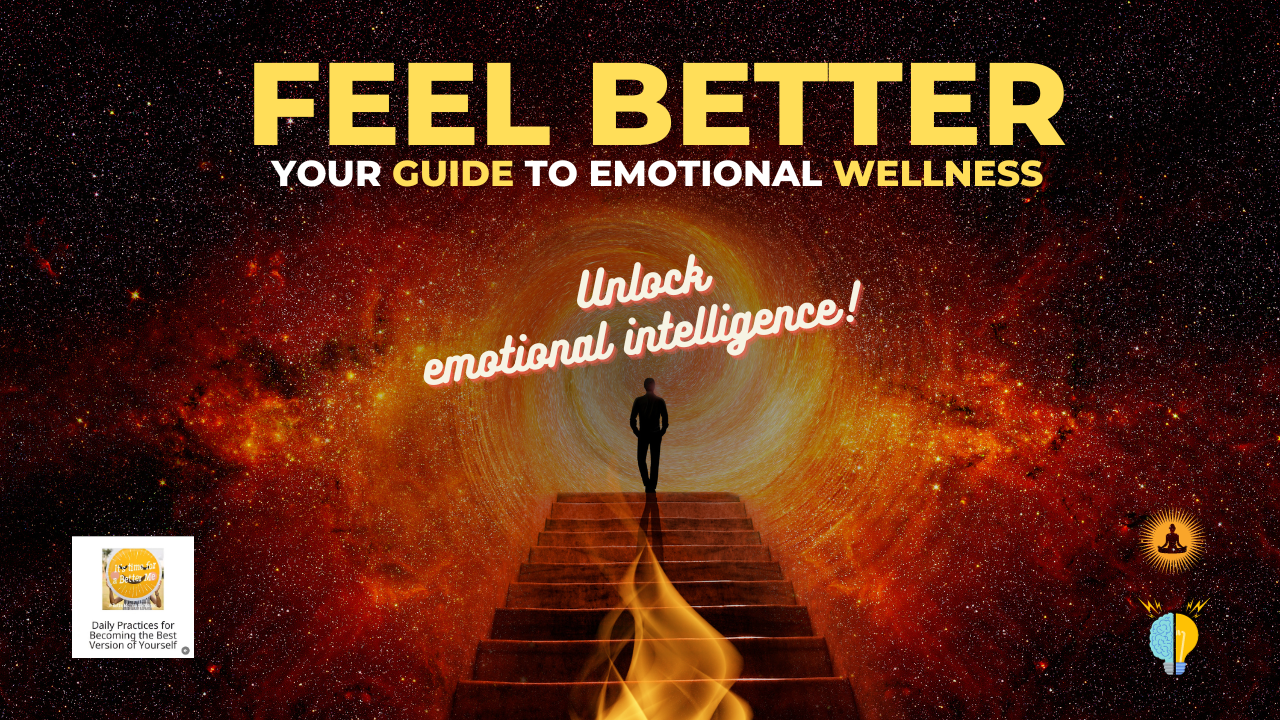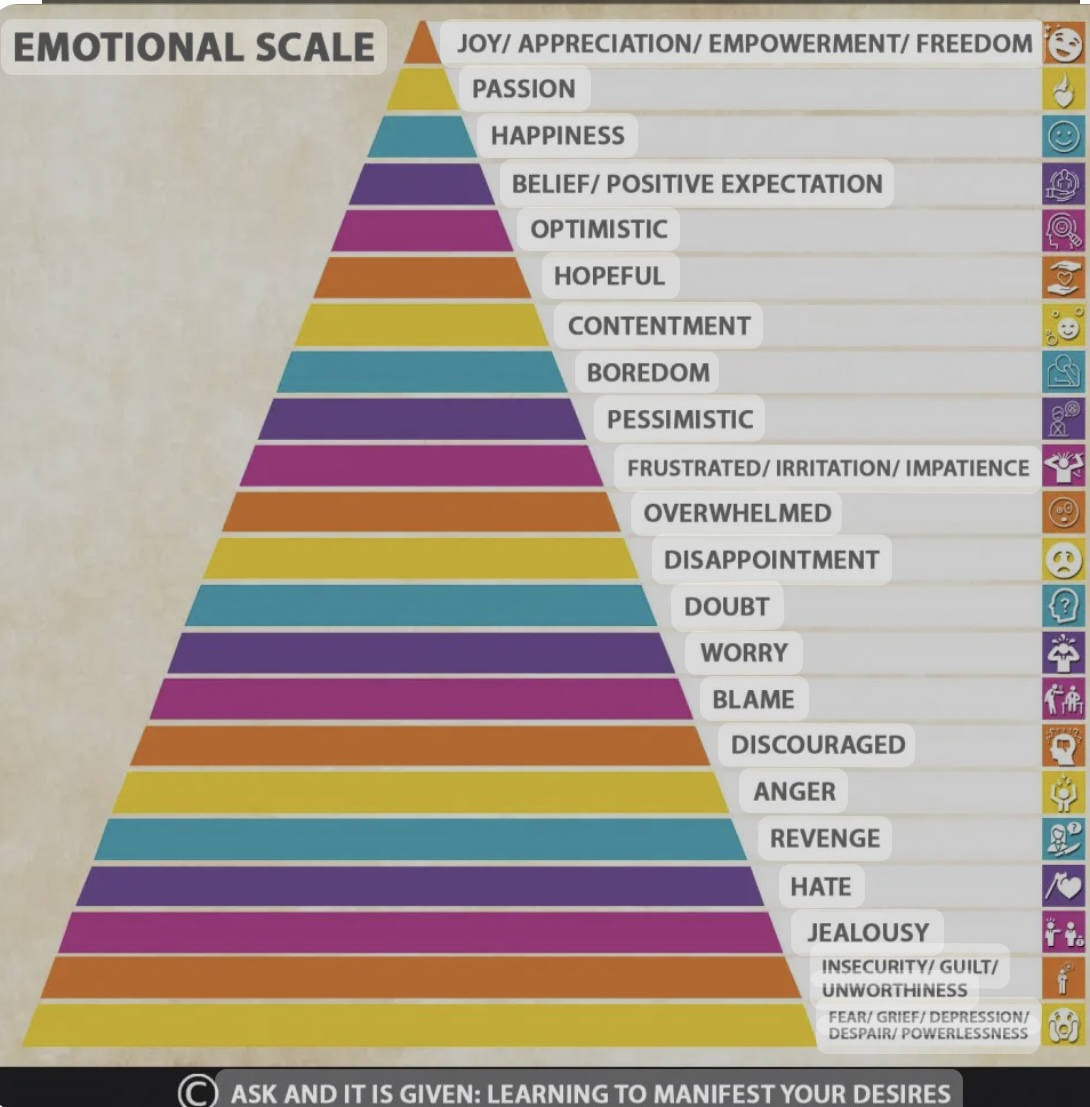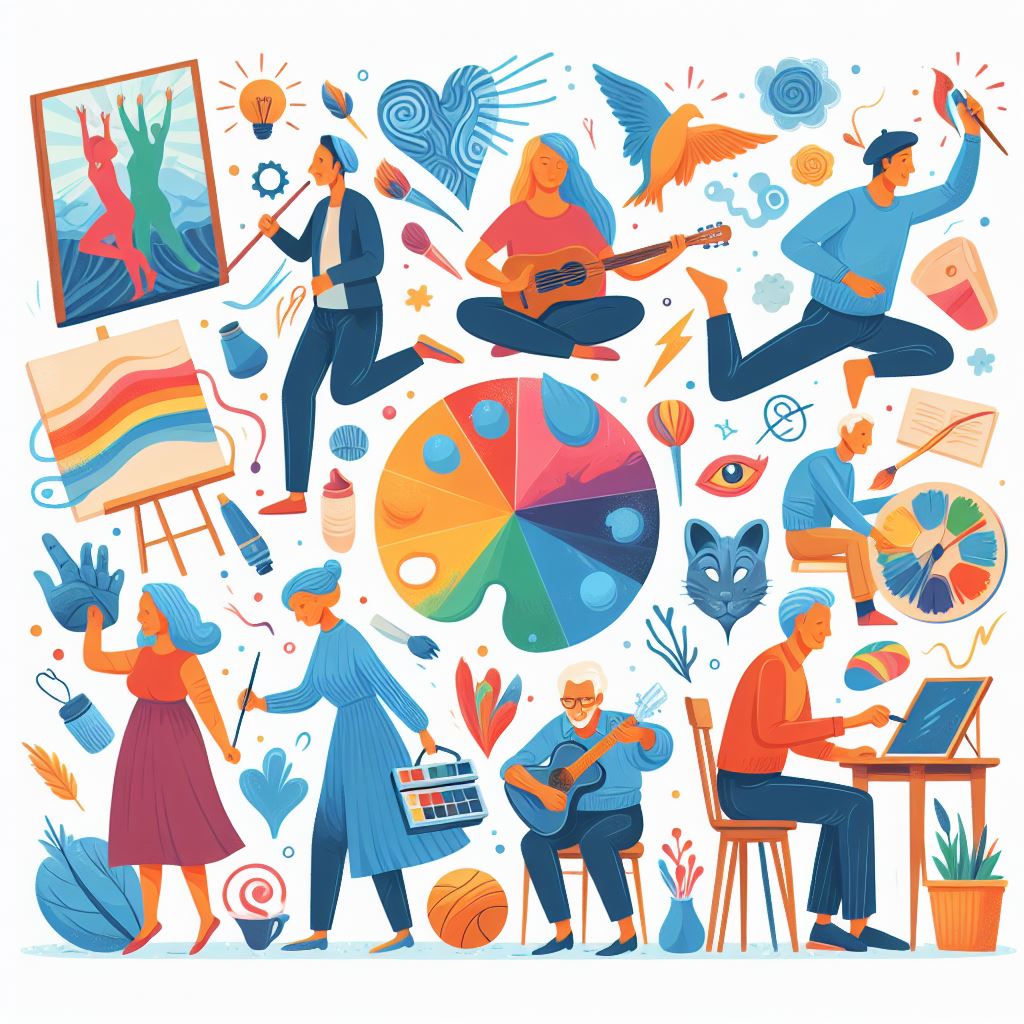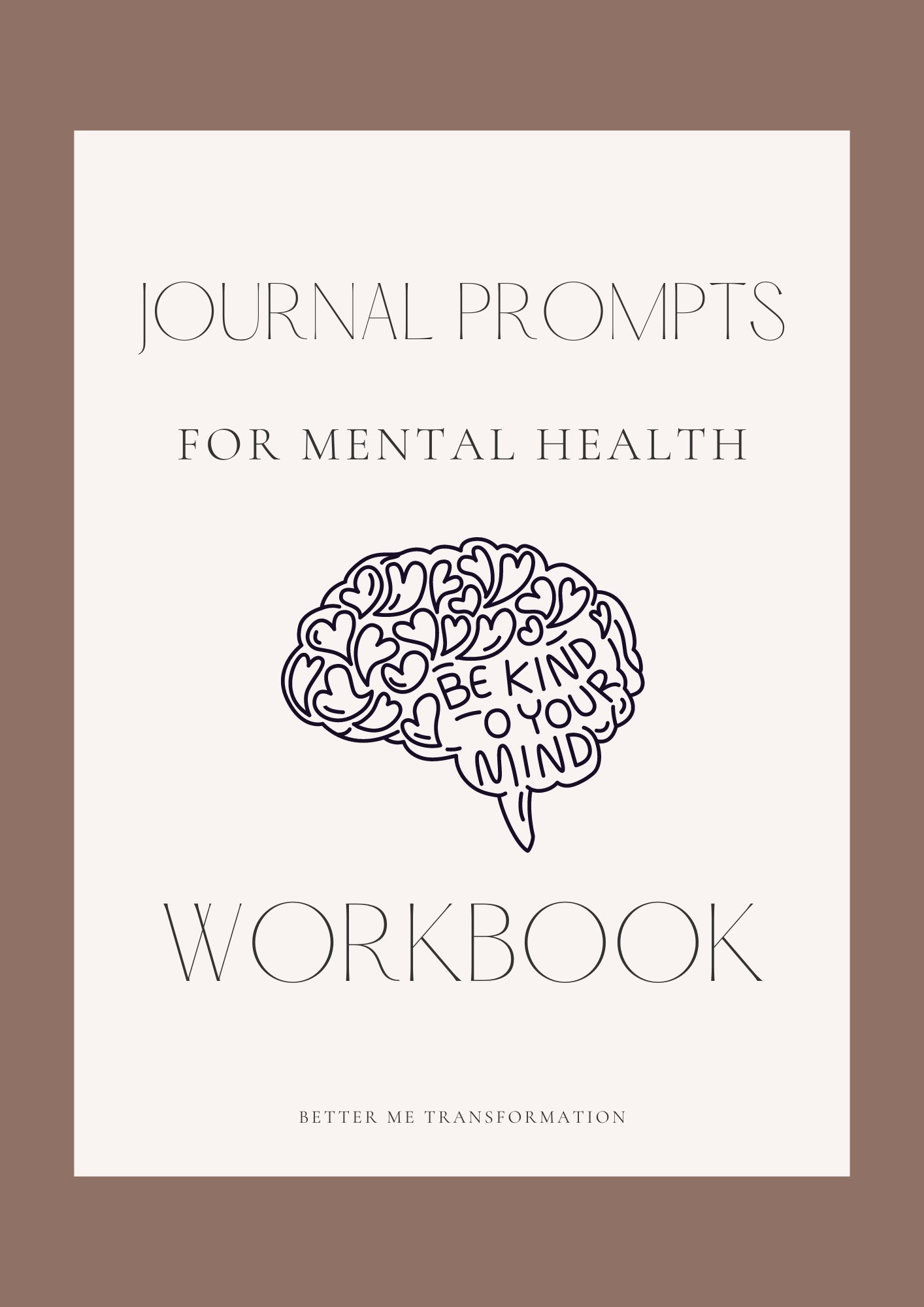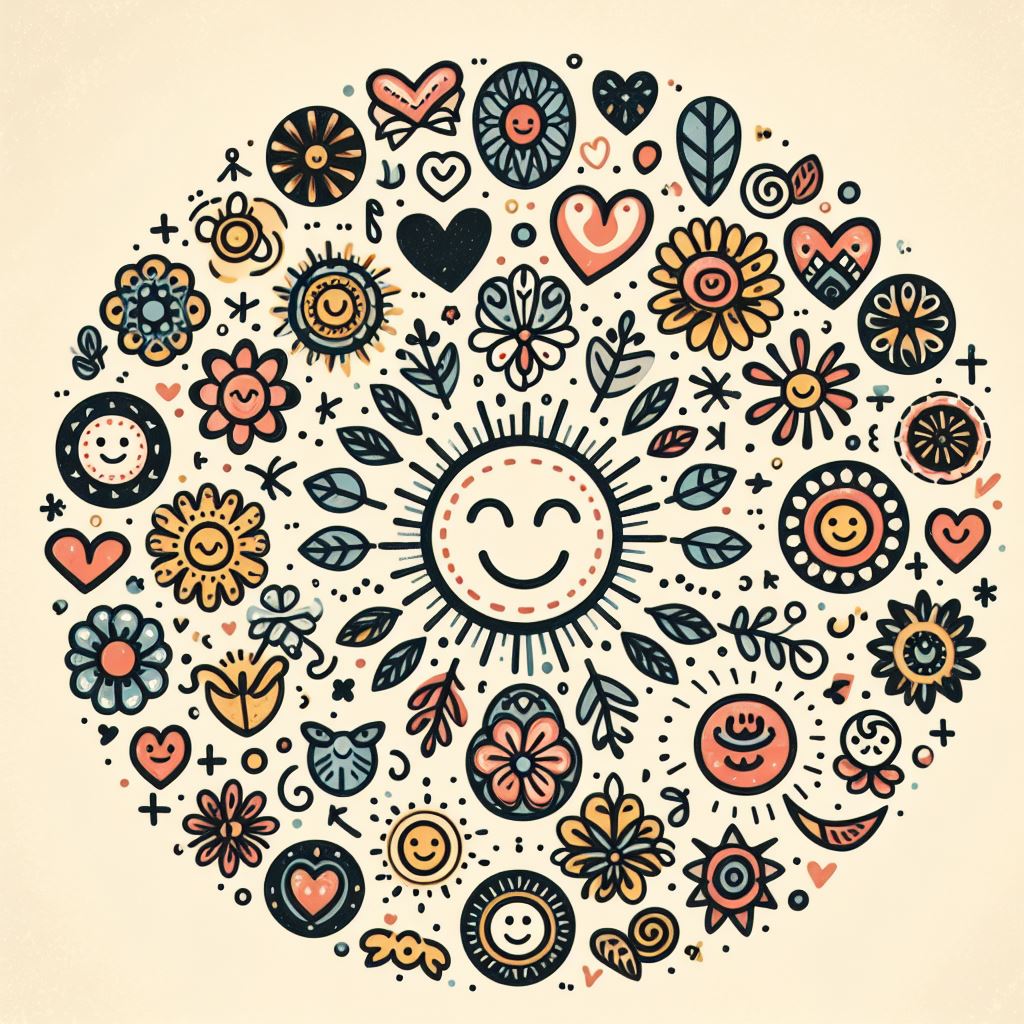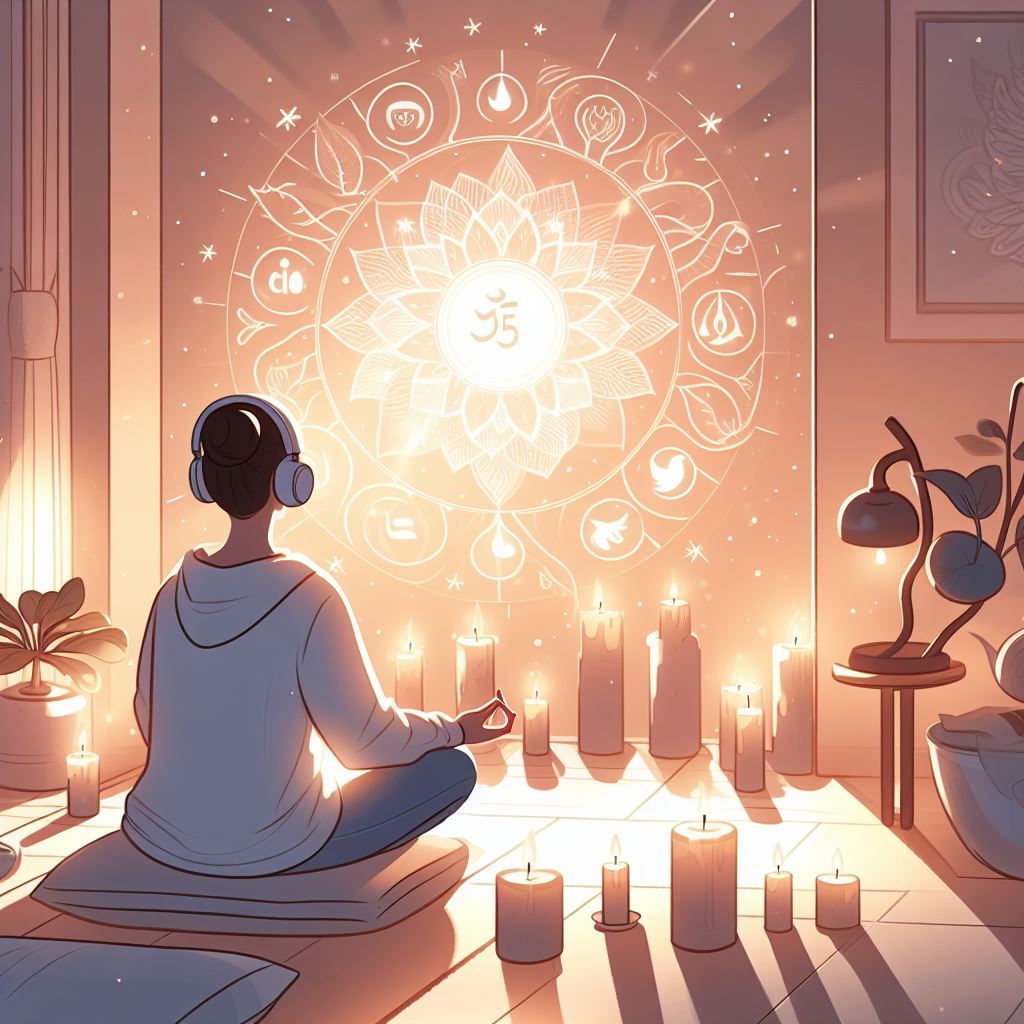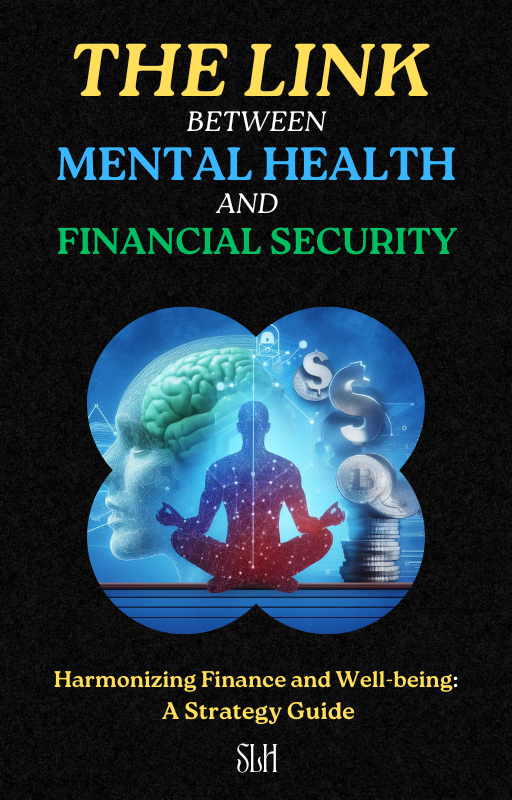- Home
- Feelings
Feel Better
MASTERING EMOTIONs STRESS TO BLISS
Unlock the power of managing your emotions using the Abraham Hicks Emotional Scale. Explore strategies rooted in cognitive behavioral therapy, mindfulness, and meditation techniques to help you feel better and achieve emotional wellbeing.
Life is a roller coaster of emotions, with highs that lift you to the heavens and lows that sink you into the abyss. The emotions you experience can range from the depths of despair to the peaks of joy.
Feel Better: know Your Emotions
Understanding this emotional spectrum is not just a philosophical exercise; it's vital for your overall wellbeing. Enter the Abraham Hicks Emotional Scale, a tool that categorizes various emotional states, helping you identify where you stand at any given moment. This scale serves as a roadmap, guiding you from negative emotional states like fear, grief, and depression, towards more positive emotions such as hope, happiness, and joy. Being aware of your current emotional state can offer a clear path to feeling better, both mentally and physically.
The emotional spectrum not only influences your mental state but also plays a pivotal role in your physical health, relationships, and life experiences. For instance, chronic stress or anxiety can lead to health issues like high blood pressure and heart disease. On the flip side, feeling joy and gratitude can boost your immune system and improve your quality of life. Therefore, learning to manage your emotions isn't just about feeling good; it's about enhancing your overall wellness.
So, how do you go about navigating this ROLLER COASTER OF EMOTIONS? There are several evidence-based methods to help you move up the scale and better manage your emotional wellbeing. Keep reading to find out more!
Abraham Hicks Emotional Scale
Imagine a ladder of emotions, with the bottom rung being where you feel really down, and the top being a place of pure happiness and empowerment. That's what the emotional scale is—a way to understand and categorize your feelings, helping you climb that emotional ladder step by step.
Picture this: at the very bottom, you have emotions like fear, grief, and despair. No one wants to be stuck here, but the important thing is recognizing you're on this rung. As you move up, you encounter feelings like anger, frustration, and doubt. These aren't great, but they're better than what's below. Then, you keep going up towards optimism, happiness, and finally joy and empowerment at the very top.
So, how do you use this scale? Use the COLORS AND EMOTIONS CHART as a starting point tool to check in with yourself. Find out what feelings and physiological impacts are associated with each color. Feeling down? See where you are on the scale and aim for the next best emotion.
Think of it as your emotional GPS. You don't have to leap all the way to joy in one go; you can make it a journey, improving bit by bit. By understanding this scale, you can guide yourself to a better emotional state, no matter where you start. 🌈
Cognitive Behavioral Therapy
Cognitive Behavioral Therapy, or CBT, is like having a toolbox for your mind. It gives you practical skills to help you understand your emotions and manage them in order to feel better. This approach aligns perfectly with the emotional scale by providing ways to challenge and change your thoughts, ultimately helping you move up the emotional ladder.
Self-Questioning Technique: HOW DO I GET BETTER? When you're caught in a loop of negative emotions, ask yourself: "Is this thought true? Is it helpful?" Challenging your thoughts this way can shift your focus and make you realize that maybe what you're feeling isn't as dire as it seems. For instance, if you're at the 'fear' stage on the emotional scale, questioning those fearful thoughts can help you ascend to a less intense emotion like 'pessimism.'
Goal Setting: Setting small, achievable goals helps you gain a sense of control and accomplishment. Start by identifying what emotion you're at on the scale and set a goal to reach the next higher emotion. Maybe your goal is as simple as taking a deep breath or talking to a friend. Each time you reach a goal, you move up a rung on the emotional ladder.
The Reframe Technique: This technique involves changing your perspective on a situation. Let's say you're feeling 'overwhelmed,' which is lower on the Abraham Hicks scale. Instead of thinking, "I can't handle this," reframe it to, "Let's break this into smaller tasks that I can manage." This subtle shift can elevate you to a higher emotional state like 'hopefulness.'
- Identify Emotion: Use the emotional scale to pinpoint where you are.
- Challenge Thought: Apply self-questioning to evaluate the validity of your emotion.
- Set Goal: Pick a reachable objective that moves you up one emotion on the scale.
- Reframe: Change your mindset to view your situation in a more positive light.
- Evaluate: Did you move up on the emotional scale? If yes, great! If not, reassess and try again.
By mastering these CBT techniques, you're equipping yourself to climb the emotional ladder effectively. Just like a ladder, it's one step at a time, but each step gets you closer to emotional well-being so you can feel better.
Tools for Emotional Wellbeing
Meditation and mindfulness aren't just trendy buzzwords; they're proven tools that can help you navigate your emotional landscape. Just as Cognitive Behavioral Therapy aligns with the Abraham Hicks Emotional Scale, so do these contemplative practices. They offer you ways to climb up that emotional ladder, whether you're a beginner or someone keen on deepening your meditation journey.
Guided Meditations: Especially good for beginners, guided meditations provide you with a narrator who leads you through a mental journey. Picture yourself at the 'despair' stage on the emotional scale; a guided meditation focusing on hope or self-love could help elevate you to a slightly better feeling like 'doubt' or 'disappointment,' giving you a leg up.
Deep Breathing Exercises: Deep breathing, such as the 4-7-8 technique, can act as an immediate emotional reset. If you find yourself lingering in 'anger' or 'frustration,' taking a few deep breaths can help you find a calmer state of 'pessimism,' which is higher up the emotional scale.
Mindfulness Practices: Being mindful means being present and aware. Techniques include observing your environment, keeping a thought journal, or even mindful eating. For instance, if you're feeling 'overwhelmed,' the simple act of fully engaging with your senses and surroundings can help you move towards a higher emotion like 'hopefulness.'
Progressive Relaxation: Progressive relaxation involves tensing and relaxing muscle groups from your toes upward. It's a great practice for those already familiar with meditation. This could help you transition from a state of 'worry' to a higher state of 'contentment.'
Step-by-Step Guide to Practice
- Identify Your Emotion: Use the Abraham Hicks Emotional Scale to pinpoint your current emotional state.
- Choose a Practice: Pick a meditation or mindfulness technique that you feel comfortable with.
- Engage: Spend 5-10 minutes on your chosen practice.
- Reassess: After the session, identify your emotion on the scale again. Have you moved up a rung or two?
- Repeat: Consistency is key. Make it a daily practice to continually climb the emotional ladder.
Whether you're a newbie or an experienced meditator, incorporating these practices into your daily routine can make feeling better more attainable and meaningful. And remember, emotional wellbeing is not a sprint; it's a lifelong journey, one step at a time.
Practical Strategies and Tips
Life is filled with emotional ups and downs, like riding a roller coaster without a manual. However, when you apply some practical strategies, navigating those peaks and valleys becomes easier. In this section, you'll find actionable tips and real-life stories to help you build emotional resilience so you can feel better and move towards a state of joy and empowerment.
Self-Awareness is Key: The first step to managing your emotions is recognizing them. Jane, a young professional, always found herself stuck at the 'worry' stage on the scale. She decided to maintain an "Emotion Diary" where she jotted down her feelings and the situations that triggered them. This helped her become more self-aware and climb up to a state of 'optimism.'
Speak It to Tweak It: Verbalizing your feelings can be therapeutic. Mark, who was going through a tough divorce, started attending group therapy. Sharing his journey and hearing others' stories helped him move from a state of 'grief' to a more manageable state of 'frustration.'
Develop an Emotional Toolkit: Always have a go-to list of activities that bring you joy or peace. Whenever Sara, a single mom, feels 'overwhelmed,' she turns to her toolkit, which includes a short walk, listening to her favorite podcast, or even doodling. These activities help her ascend the emotional scale to feelings like 'hopefulness.'
Revisiting Goals: If you find yourself frequently stuck at the 'disappointment' or 'doubt' rungs of the emotional scale, it might be a good time to revisit your goals. Are they realistic? Are they truly yours, or are they societal expectations? Realigning your goals can propel you towards 'belief' or 'expectation,' higher up on the scale.
User Testimonials:
- "Applying the Abraham Hicks Emotional Scale changed the way I approach life. Now I'm better equipped to handle emotional turbulence." – Emily, a university student.
- "Deep breathing exercises were a game-changer for me. They helped me move from a constant state of 'anxiety' to 'hopefulness.'" – Raj, an entrepreneur.
You are the captain of your emotional ship and whether or not you feel better. The Abraham Hicks Emotional Scale can be your compass, and these practical strategies can be your map. So, gear up and set sail towards joy and empowerment, because a smoother emotional journey awaits.
Your Journey towards Feeling Better
Congratulations on taking the first step towards emotional wellness by exploring this page! Understanding your emotions using the Abraham Hicks Emotional Scale is like having a roadmap to your own mental landscape. This scale is not just a tool; it's a guide that can help you transition from lower emotional states like 'fear' or 'grief' to elevated states of 'joy,' 'love,' and 'empowerment.'
Remember, progress is a journey, not a sprint. While the emotional scale offers a blueprint for you to feel better, climbing it requires your active involvement, patience, and practice. Nobody moves from 'despair' to 'joy' overnight, but the incremental shifts are victories you should celebrate.
Prioritizing your mental health is not just good for you, but it's also beneficial for those around you. A healthier emotional state allows you to bring your best self to your relationships, your work, and your life in general.
If you find yourself struggling to move up the Emotional Scale, remember that seeking professional help is a sign of strength, not weakness. Counselors, therapists, and psychologists are trained to help you explore your emotions and give you strategies to improve your overall wellbeing.
So as you move forward, carry these lessons and tools with you on your journey to emotional wellness. Take it one step at a time, and never underestimate the power of a positive mindset. After all, your emotional wellbeing is a lifetime journey, and you're well on your way.
Thank you for investing time in understanding your emotional spectrum. We wish you all the best in your journey towards feeling better and achieving emotional wellness!
transformation talks newsletter
Ready for a transformational journey? Subscribe to TRANSFORMATION TALKS and unlock the secrets to a better you! Join us on this empowering adventure toward self-improvement and well-being. Your guide to personal growth is just a click away. Subscribe now for a brighter, better future!
